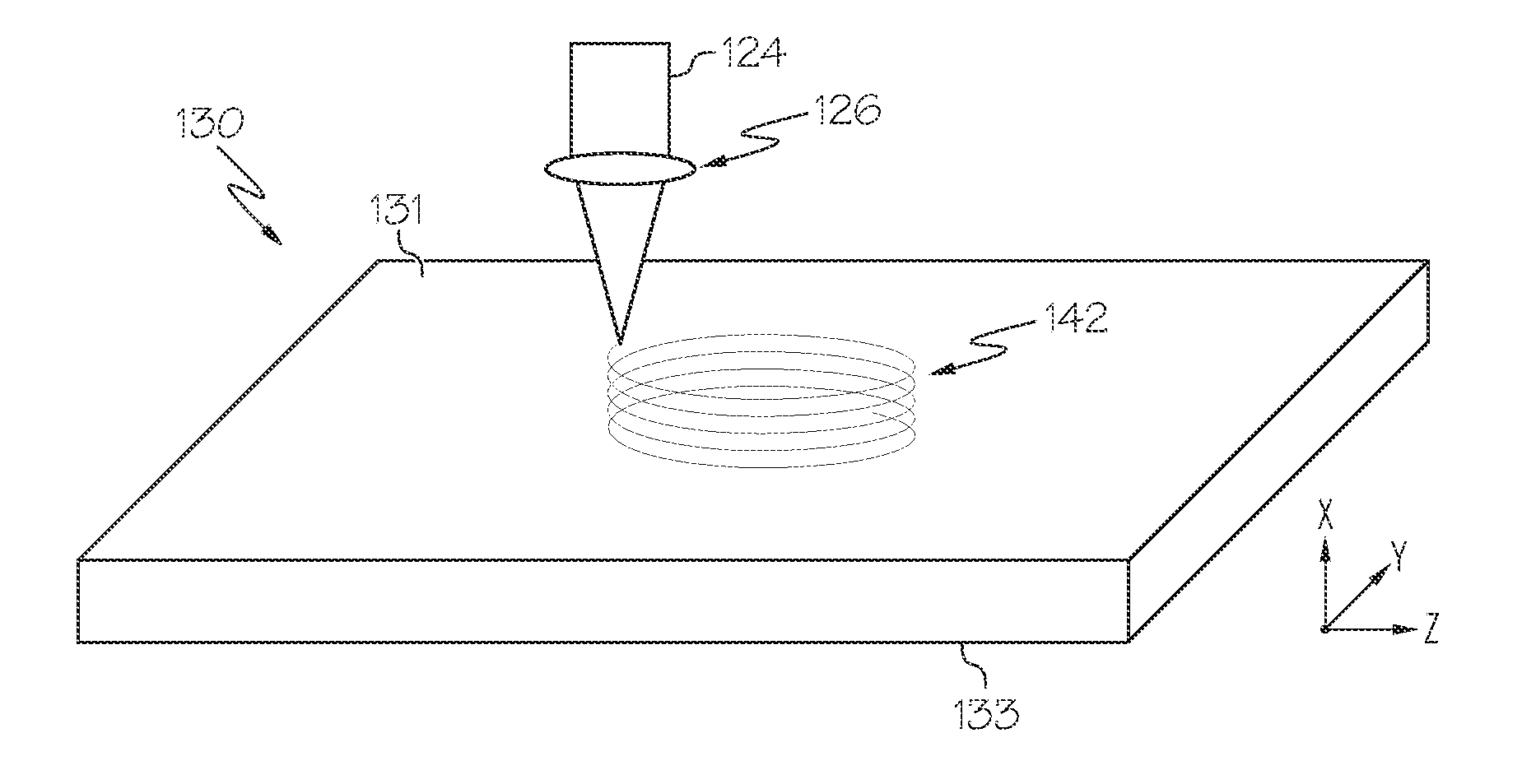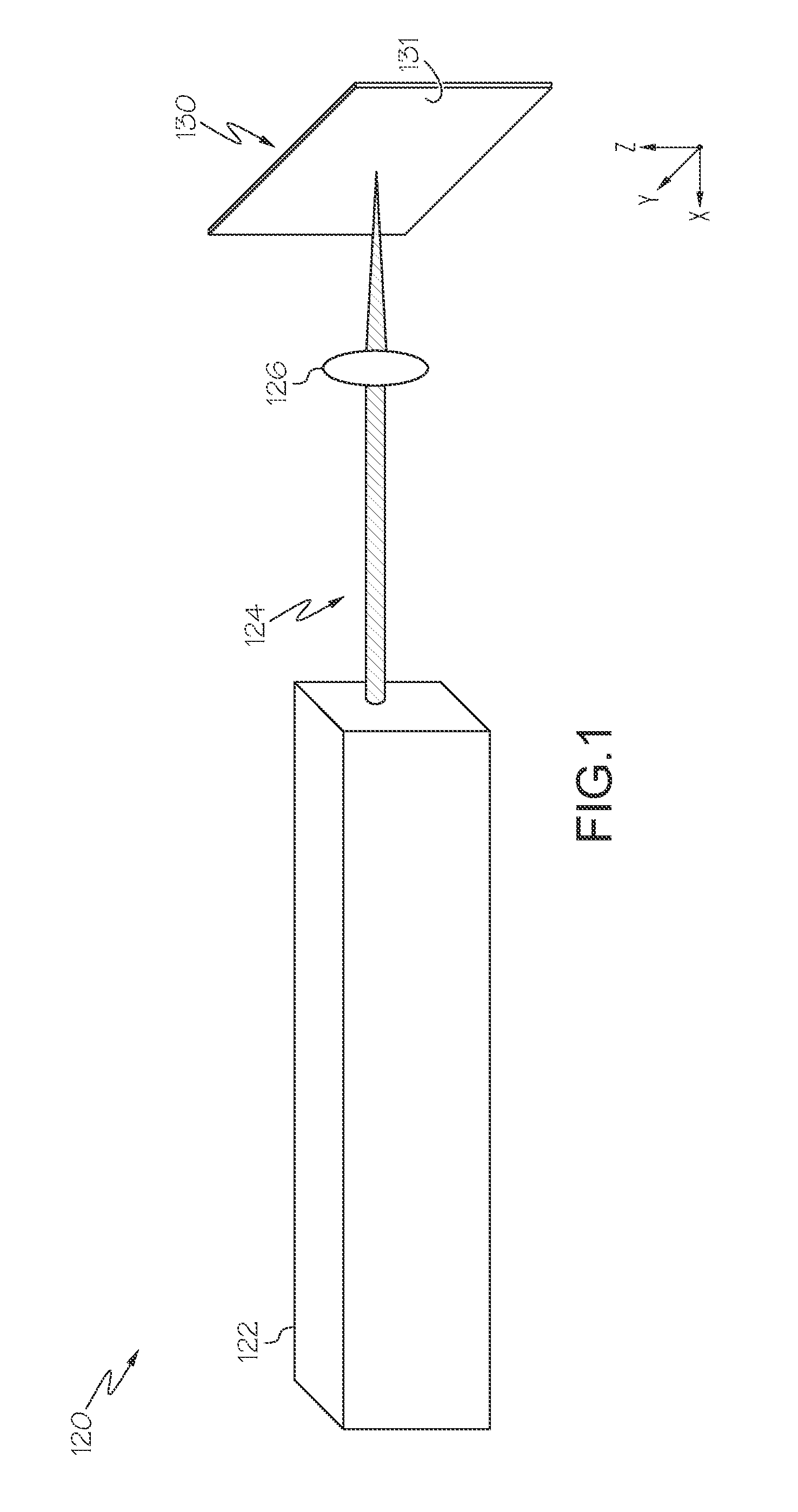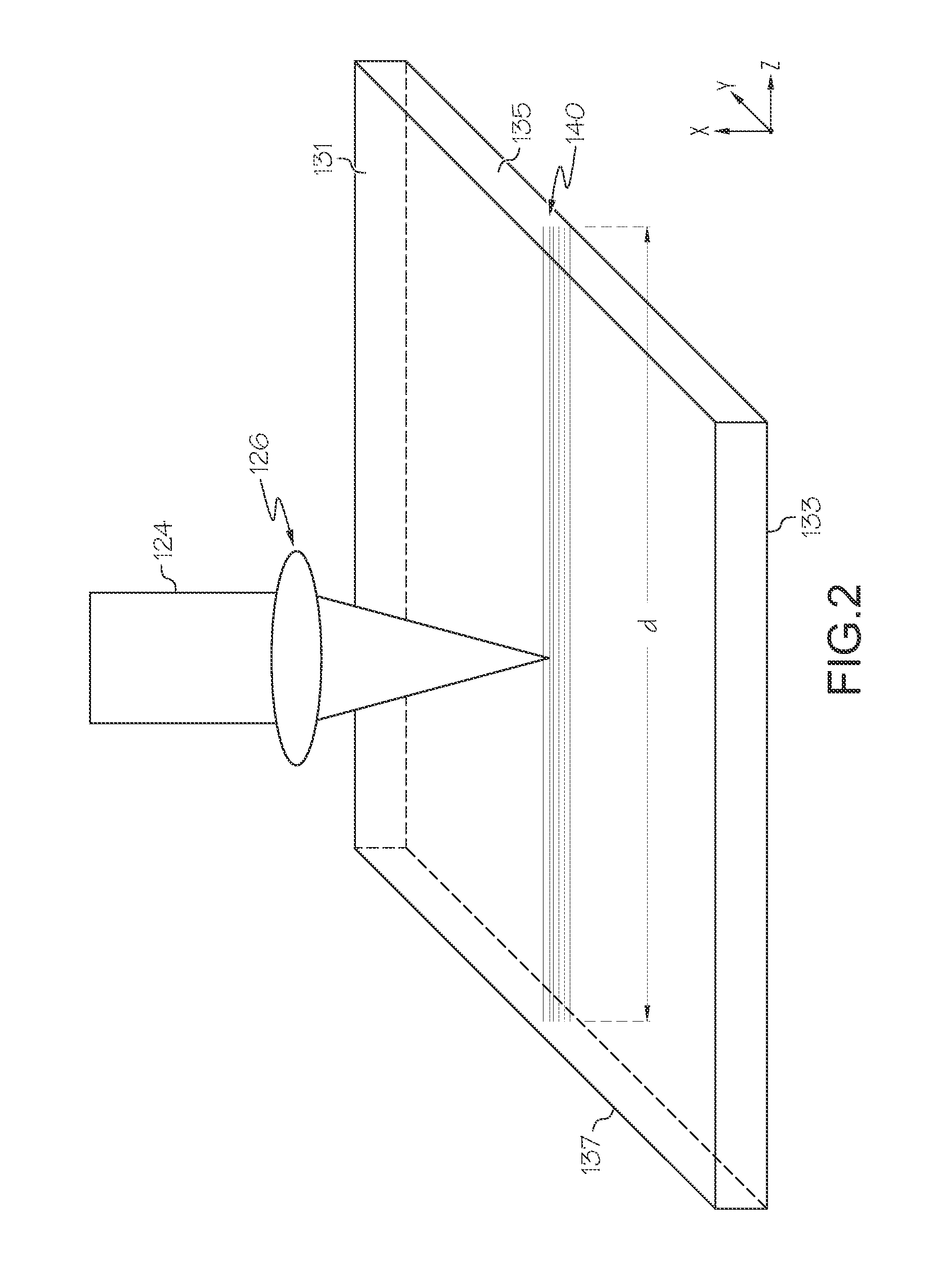Methods of fabricating glass articles by laser damage and etching
a glass and laser damage technology, applied in glass making apparatus, manufacturing tools, transportation and packaging, etc., can solve the problems of undesired deformation, wavy surface of glass articles, and difficulty in meeting low dimensional tolerances, especially with shaped glass
- Summary
- Abstract
- Description
- Claims
- Application Information
AI Technical Summary
Benefits of technology
Problems solved by technology
Method used
Image
Examples
Embodiment Construction
[0034]Reference will now be made in detail to embodiments of methods of making glass articles from a flat glass substrate sheet using laser damage and chemical etching processes. Generally, laser damage regions are formed within a flat glass substrate sheet around the edges of one or more desired glass articles to be separated from the flat glass substrate sheet, as well as formed around through-features (e.g., slots, holes, and the like) of the one or more desired glass articles. The laser damage regions are preferentially etched when the glass substrate sheet is subjected to an etchant solution. Prior to etching the glass substrate sheet and after forming the laser damage regions, the flat glass substrate sheet may, in embodiments, be reformed to achieve the desired three-dimensional shape of the one or more glass articles. The laser damage regions are created with an initial geometry that precompensates for the changing shape of the flat glass substrate sheet during the reforming...
PUM
| Property | Measurement | Unit |
|---|---|---|
| power | aaaaa | aaaaa |
| power | aaaaa | aaaaa |
| thickness | aaaaa | aaaaa |
Abstract
Description
Claims
Application Information
 Login to View More
Login to View More - R&D
- Intellectual Property
- Life Sciences
- Materials
- Tech Scout
- Unparalleled Data Quality
- Higher Quality Content
- 60% Fewer Hallucinations
Browse by: Latest US Patents, China's latest patents, Technical Efficacy Thesaurus, Application Domain, Technology Topic, Popular Technical Reports.
© 2025 PatSnap. All rights reserved.Legal|Privacy policy|Modern Slavery Act Transparency Statement|Sitemap|About US| Contact US: help@patsnap.com



